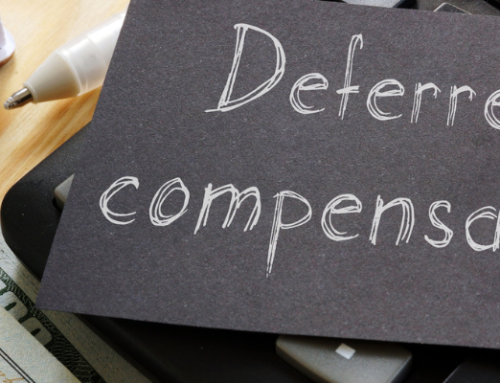The Federal Acquisition Regulations (FAR) at 31.201-2, Determining Allowability, indicates that a cost is allowable only when it complies with ALL of the requirements of:
- Reasonableness (FAR 31.201-3);
- Allocability (FAR 31.201-4);
- Generally accepted accounting principles and practices (GAAP) appropriate to the circumstances;
- Terms of the contract, where an allowable and allocable cost can be made unallowable; and
- Any limitations set forth in Subpart 31.2 of the FAR.
FAR 31.201-6 then goes on to establish the proper accounting for unallowable costs indicating that expressly unallowable costs or mutually agreed to unallowable costs, including mutually agreed to be unallowable directly associated costs, shall be identified and excluded from any billing, claim, or proposal applicable to a Government contract. The clause also indicates that this requirement also applies to costs incurred for the same purpose in like circumstances, which would also be considered unallowable.
Expressly unallowable costs are defined at FAR 31.001 and in the Cost Accounting Standards, CAS 405, as a “particular item or type of cost, which under express provisions of an applicable law, regulation, or contract is specifically named and stated to be unallowable”.
FAR 31.205, Selected Costs, identifies forty-six categories of cost that range from those that are allowable, those costs that are allowable with some exceptions, those costs that are unallowable with some exceptions, and those costs that are expressly unallowable.
The Defense Contract Audit Agency, or DCAA, issued a Memorandum for Regional Directors (MRD 19-PAC-002(R)) that provided the following: “In order for a cost to be expressly unallowable, the cost principle must state in direct terms that the costs are unallowable, or leave little room for interpretation or differences of opinion as to whether the particular cost meets the allowability criteria.” It also adds, “The Government must show that it was unreasonable, under all circumstances, for a person in the contractor’s position to conclude that the costs were allowable.”
In this MRD, DCAA provided a listing of FAR and DFARS clauses that are considered to contain expressly unallowable costs subject to penalties as described in FAR 42.709-2. The following FAR and DFARS clauses are considered to identify expressly unallowable costs:
- 105, Construction and architect-engineer contracts,
- 205-1, Public relations and advertising costs,
- 205-3, Bad debts,
- 31205-6, Compensation for personal services
- 205-8, Contributions or donations,
- 205-10, Cost of money,
- 205-11, Depreciation,
- 205-13, Employee morale, health, welfare, food service, and dormitory costs and credits,
- 205-14, Entertainment costs,
- 205-15, Fines, penalties, and mischarging costs,
- 205-17, Idle facilities and idle capacity costs,
- 205-18, Independent research and development and bid and proposal costs,
- 205.19, Insurance and indemnification,
- 205-20, Interest and other financial costs,
- 205-21, Labor relations costs,
- 205-22, Lobbying and political activity costs,
- 205-23, Losses on other contracts,
- 205-27, Organization costs,
- 205-30, Patent costs,
- 205-31, Plant reconversion costs,
- 205-33, Professional and consultant service costs,
- 205-35, Relocation costs
- 205-38, Selling costs,
- 205-41, Taxes,
- 205-44, Training and education costs,
- 205-46, Travel costs,
- 205-47, Costs related to legal and other proceedings,
- 205-48, Research and development costs,
- 205-49, Goodwill,
- 205-51, Costs of alcoholic beverages,
- 205-1, Public relations and advertising costs,
- 205-6, Compensation for personal services,
- 205-22, Lobbying and political activity costs,
- 205-70, External restructuring costs, and
- 205-71, Costs related to counterfeit electronic parts and suspect counterfeit electronic parts.
This is quite an extensive list. It is strongly suggested that contractors become familiar with the referenced MRD and the expressly unallowable costs detailed within.
FAR 42.709-2 identifies the penalties that apply for the inclusion of the listed expressly unallowable costs equal to the value of the costs allocated to the contracts that include this clause for which an indirect cost proposal has been submitted, plus interest on any paid portion of the disallowance. Keep in mind that an “indirect cost proposal” includes any billing, claim, or proposal to the Government (FAR 31.201-6). This includes the Incurred Cost Proposal submitted under FAR 52.216-7, Allowable cost, and payment. If the cost was determined to be unallowable prior to the proposal submission the penalties to be assessed are twice the amount of the value of the cost allocated to the contracts that include this clause. A key point to be remembered is that the penalty is only calculated on the amount of the unallowable cost allocable to the contract or contracts containing the penalty clause.
Compliance with these requirements can be quite daunting and DCAA is not always right when they identify non-compliance. It may be advisable to obtain professional assistance when facing a cost disallowance and penalty situation.





